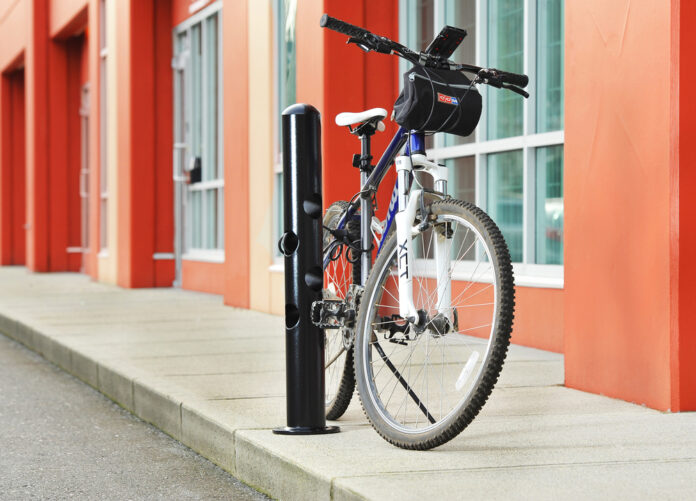As urban landscapes evolve to prioritise sustainability and healthier commuting options, the humble bicycle has emerged as a star player in the quest for eco-friendly transportation. With cycling gaining popularity, it’s essential to address The requirement for storage solutions that are both safe and secure. Enter two-wheeler shelters – innovative structures that protect bicycles from the elements and contribute to the overall urban aesthetic. In this blog post, we’ll explore the significance of bicycle shelters, delve into their design principles, highlight their security features, and discuss their broader impact on urban spaces.
Design Principles of Cycle Shelters
- Functionality Meets Aesthetics: The design of pedal shelters goes beyond mere practicality; it’s about seamlessly integrating functionality with aesthetics. Modern urban planners understand that a bicycle shelter should not be an eyesore but a complement to the architectural landscape. This involves considering the cityscape’s existing structures, materials, and colour schemes. A well-designed cycle shelter can enhance an area’s overall appeal, making it more inviting for cyclists and pedestrians.
- Adaptability to Diverse Environments: Urban spaces vary greatly, from bustling downtown areas to serene suburban neighbourhoods. Designing cycle shelters that can adapt to diverse environments is crucial. This adaptability involves considerations such as size, shape, and materials. A downtown setting might require sleek, space-efficient designs that cater to many cyclists, while a suburban area might benefit from larger shelters that blend seamlessly with green surroundings. The adaptability of bicycle shelters ensures their relevance and functionality across different urban contexts.
- Sustainable Materials and Practices: Pedal shelters must align with eco-friendly design principles in an era focused on sustainability. Utilising recycled materials, employing energy-efficient manufacturing processes, and incorporating green roofs are just a few ways to make two-wheeler shelters environmentally responsible. By adopting sustainable practices, these shelters contribute to the broader goal of creating a greener urban environment. The conscientious use of materials lessens the environmental impact and sets a positive example for the community.
- User-Centric Design: A user-centric approach is fundamental when designing cycle storage units. The design process should prioritise accessibility, user-friendly operation, and convenience. Elements such as weather-resistant coatings, sufficient lighting, and locking mechanisms that are easy for users contribute to an enhanced overall user experience. Furthermore, considering the needs of diverse user groups, such as commuters, students, and recreational cyclists, ensures that cycle shelters cater to the entire spectrum of urban cyclists.
Security Features of Cycle Shelters
- Robust Locking Systems: Security is a top priority when designing bicycle shelters. Robust locking systems are essential to protect bicycles from theft and vandalism. State-of-the-art locking mechanisms, such as secure bike racks and electronic access systems, are commonly integrated into contemporary pedal shelters. These elements offer cyclists peace of mind and play a vital role in bolstering the general safety of the urban environment.
- Surveillance and Lighting: Cycle storage units can be equipped with surveillance cameras and adequate lighting to enhance security further. Well-lit areas discourage illicit activities and improve the visibility of the shelter, making it a safer space for cyclists to leave their bikes. Surveillance cameras act as a deterrent and provide an added layer of protection, ensuring that the sheltered bicycles remain secure even in less frequented areas.
- Integration with Smart City Infrastructure: In the era of smart cities, integrating cycle storage units into the broader urban infrastructure is a forward-thinking approach. Smart locks, sensors, and real-time monitoring systems can be incorporated into pedal shelters to enhance security measures. This integration ensures the safety of bicycles and contributes valuable data for urban planners to optimise transportation and parking systems.
- Community Involvement in Security: Engaging the community in the security of bicycle shelters fosters a sense of ownership and responsibility. Neighbourhood watch programs, signage encouraging vigilance, and partnerships with local law enforcement can all enhance the security of cycle shelters. When the community actively safeguards these spaces, the overall safety and security of the urban cycling environment are significantly improved.
Impact on Urban Spaces
- Promoting Sustainable Transportation: Two-wheeler shelters are pivotal in promoting sustainable transportation options. By providing a secure and convenient space for cyclists to park their bikes, these shelters promote an increased number of individuals opting for cycling as a feasible choice mode of transportation. This shift towards sustainable commuting reduces traffic congestion and contributes to lower carbon emissions, creating a cleaner and healthier urban environment.
- Enhancing Public Health: Promoting cycling through the provision of bicycle shelters contributes to improved public health. Regular cycling has numerous health benefits, including increased physical activity, reduced stress levels, and lower pollution exposure than motorised transportation. By creating a supportive infrastructure for cycling, cycle storage units contribute to the overall well-being of urban dwellers.
- Fostering a Sense of Community: pedal shelters can become more than just storage spaces; they can serve as focal points for community interaction. Placing benches, greenery, and public art near cycle storage units creates inviting spaces for people to gather. This fosters a sense of community among cyclists and adds vibrancy to urban areas. The social aspect of two-wheeler shelters contributes to the overall livability of cities.
Conclusion
Bicycle shelters are more than practical structures; they are essential to a sustainable and cyclist-friendly urban environment. Through thoughtful design, robust security features, and a positive impact on urban spaces, these shelters contribute to the broader goal of creating cities that prioritise the well-being of their inhabitants and the planet. As we continue to pedal towards greener and healthier urban landscapes, the role of two-wheeler shelters becomes increasingly significant, shaping how we move and interact in our evolving cities.








































